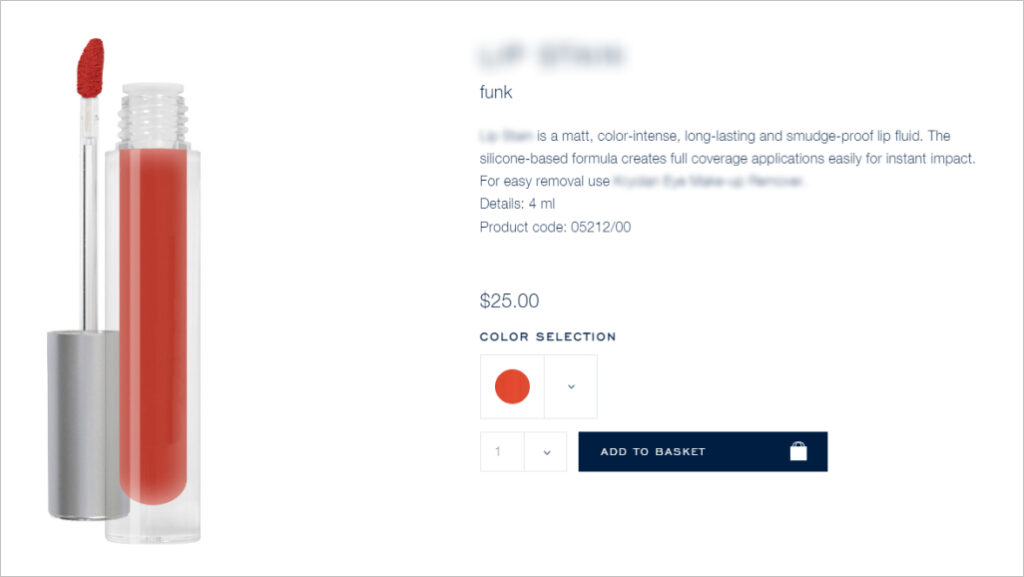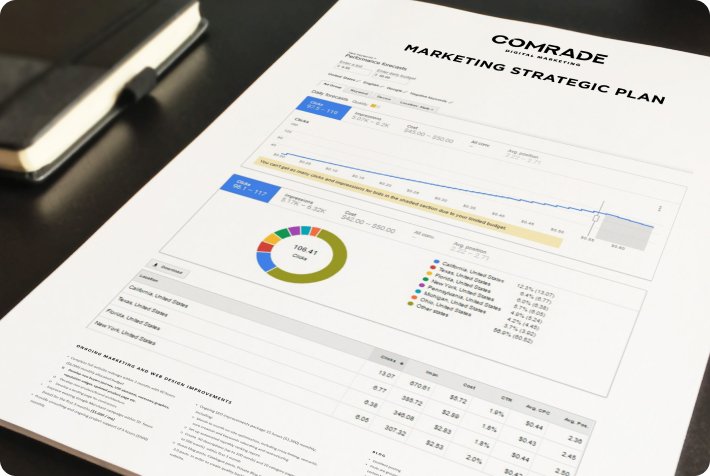Lackluster and generic product descriptions can hurt sales and search engine rankings, whereas well-crafted ones will significantly improve conversions. A touch of creativity and an in-depth understanding of your eCommerce store’s target audience can help you write effective product descriptions.
85% of shoppers rate product content critical when deciding to buy, so boring product descriptions just won’t cut it. Effective product descriptions are more about defining who you are talking to and why they should care than merely listing all the technical details.
In this blog, we explore familiar issues associated with product descriptions and offer practical tips on how to overcome them, including how to write copy that turns leads into customers.
Why You Should Write Product Descriptions Now!
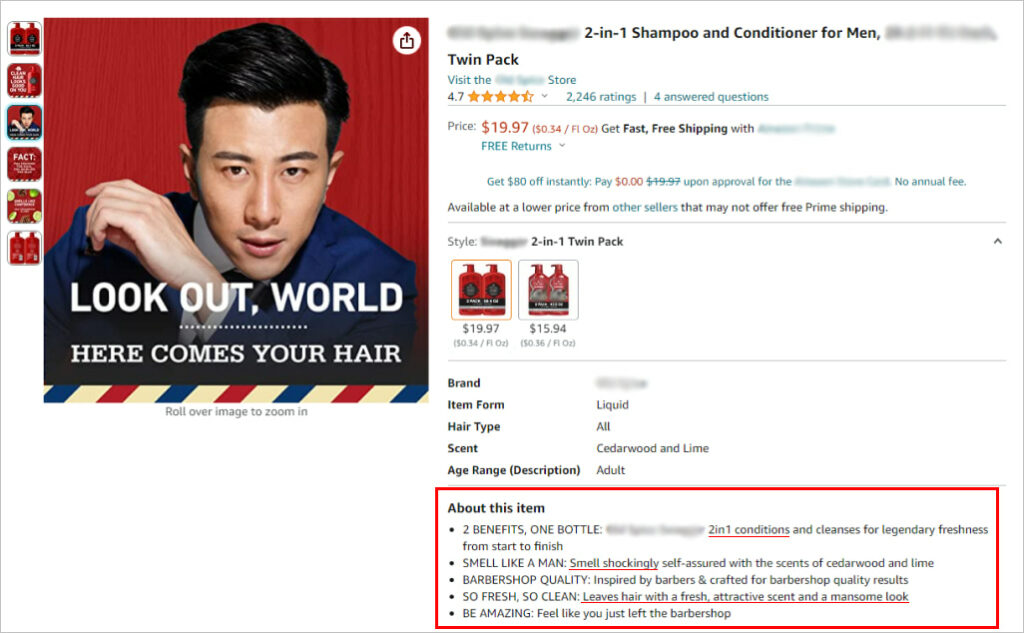
Writing product descriptions that are genuine and unique is the most effective method to stand out from shoppers. By writing product descriptions that provide answers to customer questions, and including correct details, you’ll get potential customers to buy your products and services.
This doesn’t just mean reviewing the product’s basic description. You actually need to analyze the reasons why potential buyers will select your online business over competitors. Addressing all aspects of a product description and providing an excellent video or high-quality product images will make your product pages impervious to attack.
A persuasive product description that has original content, appropriate keywords, and relevant information will address a buyer’s questions, and shed light on why they need to buy it. This is something generic material provided by manufacturers seldom accomplishes.
12 Tips for Writing Product Descriptions that Convert
Having stellar product descriptions on your eCommerce site is just as important as high-quality images and a technically flawless UI and UX.
1. Know Your Target Audience
A good product description reflects your brand and target audience. It bridges the gap between what your brand is and who your customers are. This brings us to an indispensable point. Before you can master product description writing, you actually have to know who your customers are.
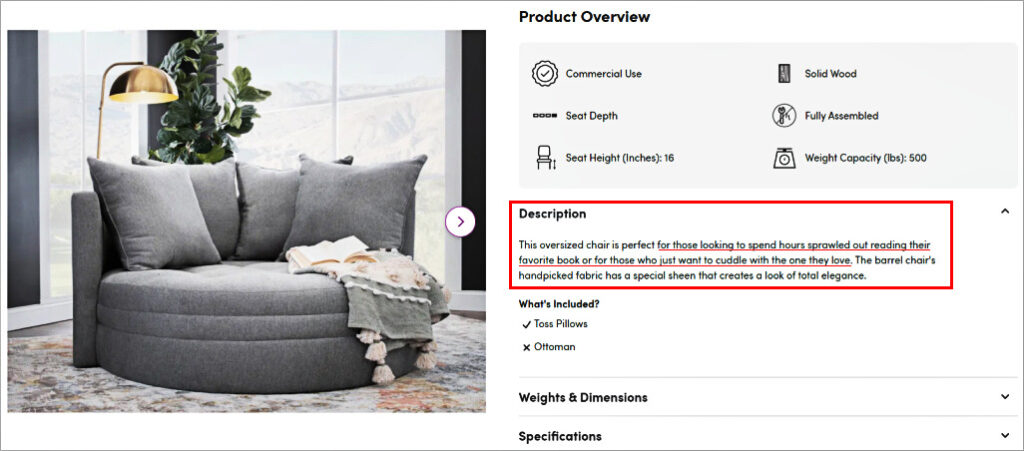
If you haven’t created buyer personas, now is the time. These are ideal customer profiles based on in-depth research of your existing or desired audience. They offer a clear picture of whom you’re marketing to and can help you write product descriptions that appeal to their unique needs.
For instance, if you sell bespoke furniture, you’ll have a different target audience from someone who sells furniture imported from Malaysia. Knowing your target customers’ intent and motivation for buying your furniture will affect the descriptive words you employ in your product descriptions.
When you begin writing your product descriptions and supporting material, keep these questions in mind:
- How did this potential buyer arrive at your page?
- What are their general interests?
- Why is this person interested in your store?
- How would this perspective customer describe the product to a friend?
- What product feature or benefit interests this persona the most?
2. Choose the Right KPIs and Goals
You require goals to measure the success of your product descriptions. Naturally, the objective is always to boost sales. However, within this overarching goal, there are much smaller KPIs you can also improve to accelerate the process.
Remember, improving your product descriptions to increase revenue, should be part of a comprehensive digital marketing strategy that uses on-page, off-page, technical and local SEO, as well as paid advertising to rank higher on search results.
Enhancing product descriptions, like most digital marketing efforts, is not a quick fix. However, if you commit it, you will see results.
When it comes to determining appropriate goals, you might want to achieve:
- An increase in conversion rates
- A decrease in cart abandonment
- A lower return rate
- Fewer calls from shoppers
- Improve organic search rankings
These are just some examples. Once you’ve determined your goals, you’ll also want to be as specific as possible. For example, increasing sales by 20%, and so on. The more specific you are, the easier it is to measure progress.
3. Focus on the Benefits
Advertising doesn’t sell a product or a service; it sells the benefits! Always remember this when devising persuasive product copy above. A great product description example lists the product’s benefits and features, using power words (adjectives) that transform it into a “must-have” in the minds of consumers.
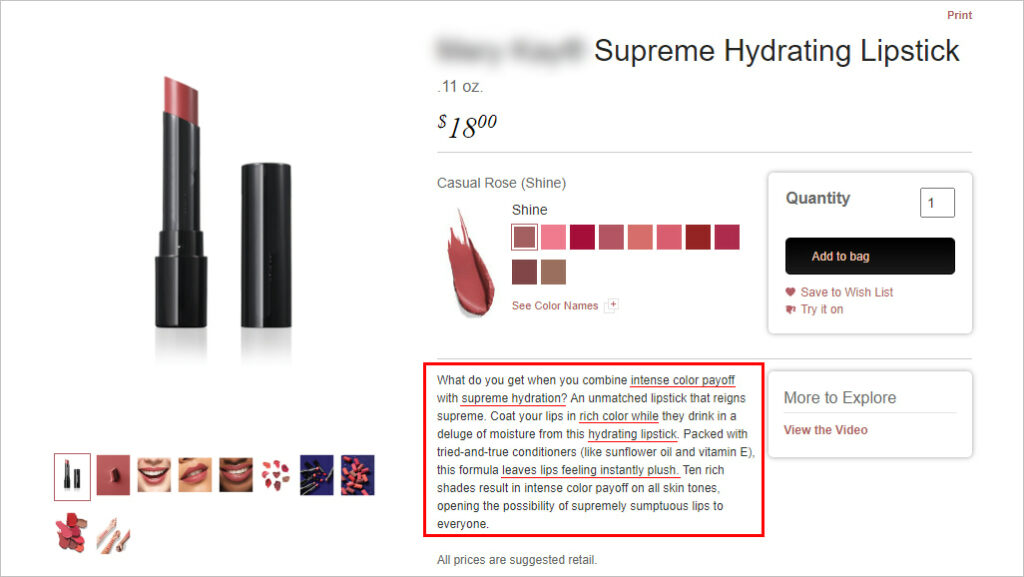
While it’s important to list the mundane product features, you want to be clear about how the product benefits the target buyer too. A product feature is a factual statement with technical information, but a product benefit describes how the product can improve the life of the ideal customer.
A generic product description template will usually list the technical details first and then have an extended product description (short paragraph) further down the web page. This is a great place to go into greater detail, and incorporate SEO keywords to rank higher on search engine results pages (SERPs).
4. Define Your Brand Voice
Create a tone of voice that’s natural and true to your brand voice. For instance, does your company communicate in a colloquial or formal way? For example, consider this product description:

Or this:
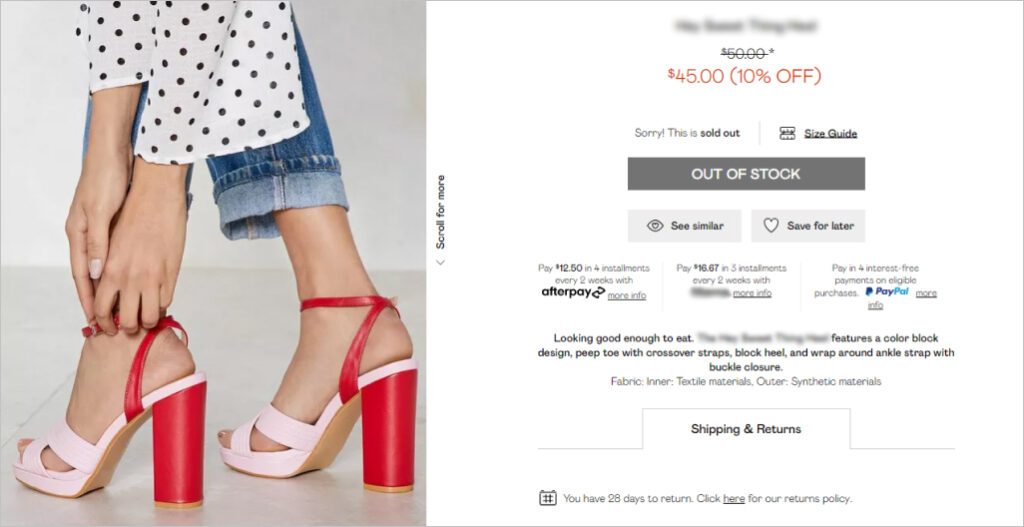
Both these examples are conversational, as though the brand is talking to someone, rather than sounding like it’s advertising its products over a megaphone. Of course, the tone of voice you choose should be consistent with your social media profiles, website copy, and other customer interactions.
If there are any inconsistencies in your business between the above-mentioned elements, you may want to revise your branding.
5. Tell a Story
The best product descriptions tell a story that appeals to customers’ emotions. A good story in your product description adds more character, engages your audience, and wins hearts and minds.

Coffee’s product description is more than just a listing of features – it’s a story. Its rich history is explored, from its traditional uses to present-day benefits.
When it comes to selling products, emotional connections can be more powerful than transactional ones. By weaving a mini-story about your product into the description, you’re more likely to connect with potential buyers on a deeper level.
If you’re unsure how to “tell a story,” you can start by thinking about the following:
- What was the inspiration behind this product?
- What was the journey of creating it?
- What story would appeal to your buyer’s imagination? How can your product or service support that story?
- What unique qualities set it apart from similar products on the market?
- What’s your buyer’s underlying emotional or psychological need for this product? What types of stories could you tell that tap into or meet this need? How could this story feature your product?
If you write product descriptions that elicit a strong and positive reaction in the potential customer, they’re much more likely to purchase it from your online shop.
6. Craft Specific Product Descriptions
When you think of how to write product descriptions, it’s easy to fall back on generic phrases like “Great product quality.” However, these phrases won’t persuade buyers. Instead, it’s important to be as specific as possible about your product’s unique features and benefits.
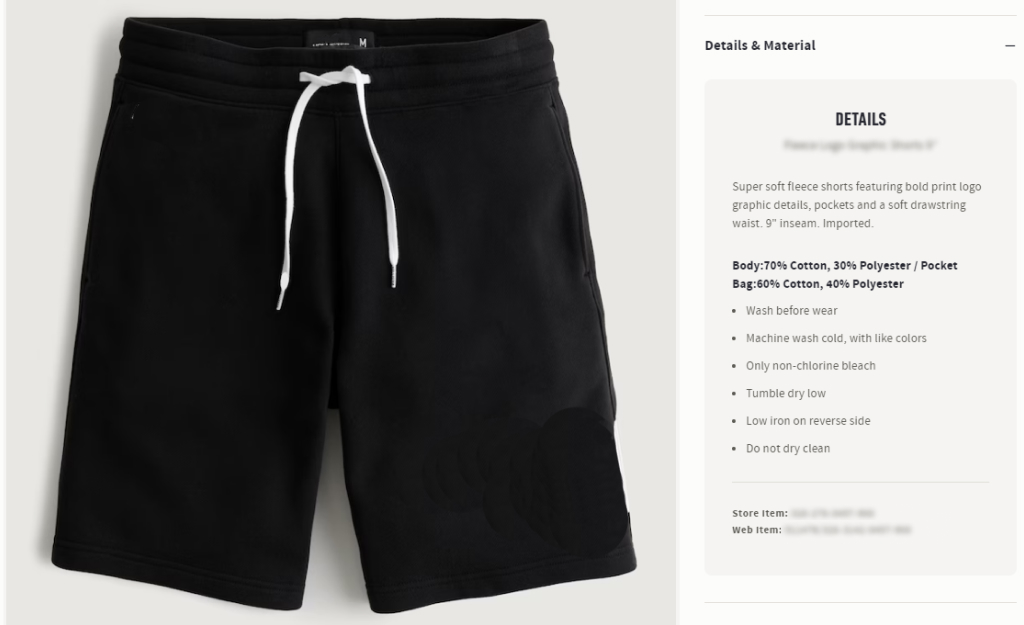
In fact, being vague can actually push potential buyers away from product pages. One study found that a shopper had to leave a site to search for more product information because the description didn’t provide enough details. As a result, he found another site with a better description and a lower price.
7. Leverage Power Words
There’s a lot of buzz around what copywriters and marketers call power words. These are persuasive words that trigger a psychological or emotional response, such as “bargain”, “cost-effective”, “rich”, “treasure”, “optimized,” etc.
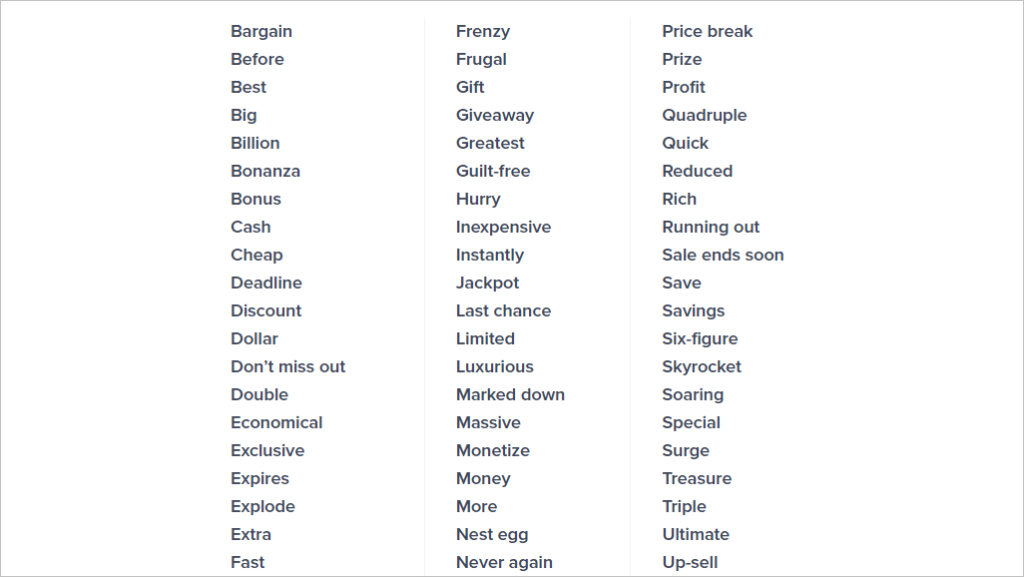
The best way to use power words is to write down your product description crafted to appeal to your specific audience, and then search for opportunities where you can swap weak adjectives or descriptions for stronger ones.

It’s good practice in general to pepper descriptions with adjectives where appropriate. This makes product descriptions less technical and helps tell a product’s story by describing it emotively.
A tip: The most powerful word is “you”. To write persuasive product descriptions, you have to speak directly to your visitors, engage them by making your product personal. This is a sure-fire way to improve conversion rate optimization.
8. Engage Your Customers’ Senses
One trick that businesses have used to captivate customers for years is sensory language. Using words that engage the senses can increase sales by getting the reader’s brain processing power more involved. Jack Daniels’s offer a great example of how sensory words and adjectives can make for captivating product descriptions even beyond the taste of the product itself.
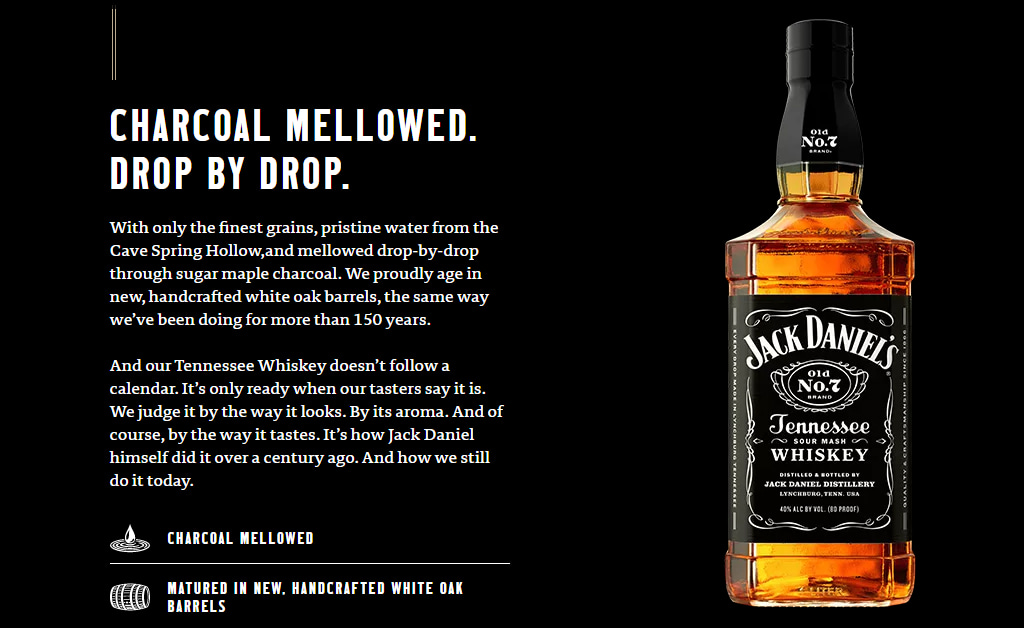
Their whisky’s descriptions include sensory adjectives that describe sound and touch as well as taste. Sensory adjectives can be particularly effective power words because they make the reader experience the product while reading about it.
9. Avoid Filler Phrases
Occasionally when we write, the fluff from talking sneaks its way into our text, which takes the punch away from product descriptions. Effective product descriptions eliminate distracting qualifying and filler words.
Most filler words are adjectives and adverbs like: “very,” “seriously,” “really,” “some,” “even,” and so on. While the words might work when we speak, they don’t actually add any substance to an effective product description.
Fortunately, written communication allows for ample opportunity to edit copy. You can always hire an editor if you need help refining your descriptions.
A good way to test your product description is to read it aloud. Ask yourself if it sounds like a real conversation you’d have with your website visitors.
If you’re stumbling over certain words, or something doesn’t sound right, it’s a sign that you need to rewrite some copy. Just to let you know: Even the most professional copywriters will often write copy a few times before finding the right words.
Some questions to ask while reviewing your description:
- Does it flow without too many big words or long sentences?
- Does it sound persuasive and energetic?
- Have you included all the features in form of benefits?
10. Provide Customer Reviews to Catapult Sales
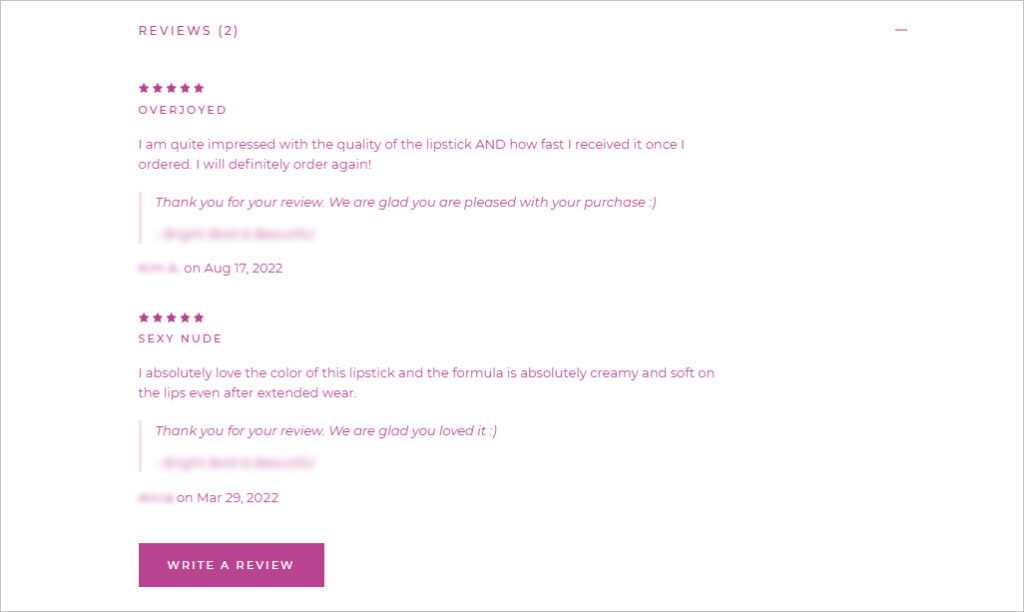
If you don’t know how to write product descriptions that are persuasive think of customer reviews. Success stories from customers describing their reasons for purchase decision, why they enjoyed the product, or how the company delivered great service provide social proof, which helps gain the trust of potential buyers.
When consumers shop online, they want to feel confident about their purchases. Reviews offer personal insights and more product details that you don’t need to spend time developing! With these components in place, along with social proof, your product pages will generate more sales.
Make sure to incorporate a review process within your digital marketing strategy. Renowned marketing software company HubSpot suggests asking customers for positive reviews at strategic moments like:
- After they experience or demonstrate success with your product or service
- When they re-purchase or re-order
- When they tag your brand on social media
- If they spend time on your website browsing other products or services
- If they refer another customer to you
It’s also common for brands to ask for ratings on social media or via email. Sometimes, they even integrate review requests and ratings into product apps.
11. Make It Scannable

Not everybody has the time to read through lengthy product descriptions. That’s why yours need to be easy to scan for important information.
There are intelligent design hacks to make your product features stand out, like:
- Using boxes
- Using one-line phrases with a larger font size
- Using white space or “negative space” to emphasize certain points
- Using high-quality images
Even smaller text isolated from dense chunks is easier to read. When web page design and text descriptions are easy to read, your product immediately becomes more appealing to a potential buyer.
12. Don’t Forget about SEO
Just because you’re dealing with product descriptions doesn’t mean you can neglect SEO. However, because product descriptions are short, unnecessary SEO use can hurt your search engine ranking.
If you try to insert a target keyword more than three times in a 300-400 word description, you risk Google removing your product page due to keyword stuffing.
Conducting keyword research will help you discover which phrases and words work best for your online store. To avoid search engine penalization, you can do the following:
- Use LSI (Latent Semantic Indexing) keywords
- Add keywords to headlines, subheadings, and body content
- Optimize images by inserting keywords in the file names, ALT tags, a product title, descriptions of the product images
- First write an informative description, then optimize it for SEO
LSI keywords: These are words that are frequently found together because they have a similar context, not because they are synonyms. For example, if you are a travel blogger, and your keyword is “cheap flights,” associated LSI keywords might be “accommodation,” “restaurant,” or “hotel.”
Product Description Template
The template below is a guideline for product descriptions. The most important thing is that it describes your product in a clear and compelling way. Ideally, a product description should be between 300-400 words and no less (see: thin content).

- Descriptive headline: Your product title should hook your audience and connect with them emotionally.
- Benefits-focused paragraph: A short paragraph briefly explaining why your online shoppers will benefit from the product.
- Key benefits list: A bullet points list of key product benefits and features.
- Additional info: Added motivation such as product reviews or urgent calls to action.
Turn Words into Sales: Mastering Product Descriptions
If you do not have the resources to come up with your own innovative and compelling product descriptions that sell, you can reach out to marketing companies or copywriters for help. After all, just because you are a business owner doesn’t mean writing needs to be your forte. In fact, it’s probably better if you stick to what you do best—running the business!
The team at Comrade Digital Marketing Agency is experienced in the product description field and is backed by the most comprehensive knowledge of search engine optimization. With the best team, you’re sure to get product descriptions that stand above the rest, which will increase sales and traffic. To begin your strategy for describing your product now, call us at 312-625-0447 today!
Need Answers? Check Out Our Product Description FAQ!
Can I copy product descriptions from others?
Absolutely not! Copying and pasting product descriptions from manufacturers can make your online store lose a massive amount of revenue. If your eCommerce business doesn't have exclusive rights to market a product, then the manufacturer will most likely provide every other online store with identical product descriptions. This is a major problem! When eCommerce site webpages have identical content for digital marketing, Google and other search engines can't distinguish between websites. While on-page SEO is key to eCommerce sites garnering more traffic, if every store has the same manufacturer-provided product description, your page views and Google ranking will suffer. If you use the same product description examples as everyone else, you'll be penalized for having duplicate content.
Why do I need to create a unique product description?
Standard product descriptions provided by manufacturers, also known as "thin content", have little or no value to search engines and can damage your own eCommerce business or store brand. Google, Bing, and other search engines, along with consumers' preferences, all favor unique, comprehensive, and persuasive product descriptions. They can also help convert potential customers.
Can I include videos in my product descriptions?
Yes! In fact, according to a recent survey, 86% of video marketers say video is effective for generating leads. Depending on the type of product or service you sell, a video may offer a better way to communicate product details and functions, especially for complex products with detachable parts.
How can I differentiate my product descriptions from those of my competitors?
First, take a look at the competition and see if they all have the same basic descriptions. If they do, make your own product copy! Use your brand voice to create unique, great product descriptions that sell. Focus on those that offer the highest profit margin and the best opportunity to cross-sell with other products.
Can I hire a professional writer or outsource writing product descriptions?
Yes, you can! Hiring an in-house copywriter or outsourcing to digital marketing experts who specialize in crafting marketing copy will help ensure your descriptions stand out. Whatever your industry or niche, there are writers who can match your style.
In what cities do you work?
Comrade originates in Chicago, but we worked all around the United States. We can help your business grow and increase revenue whenever you are. We have offices across most major cities in the US. For example, we can offer digital marketing services in New Orleans or Minneapolis. You can even find our internet marketing experts in Washington D.C.! If you want to know more about our Cleveland digital marketing agency or find out how exactly we can help you, contact us via the phone or email.

